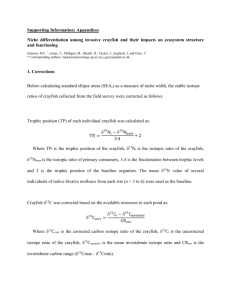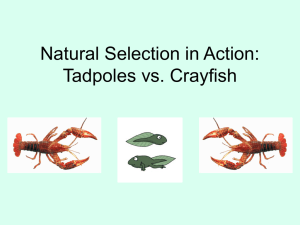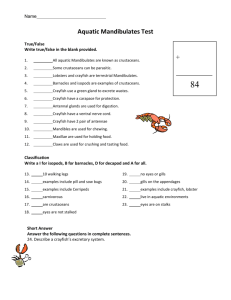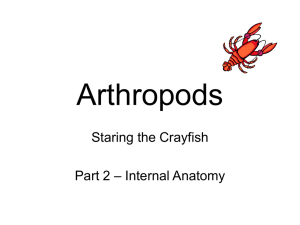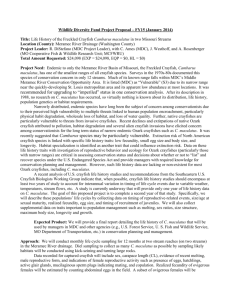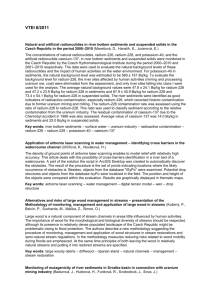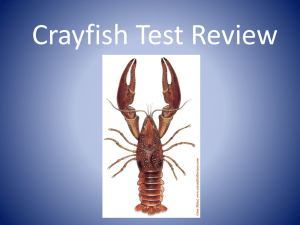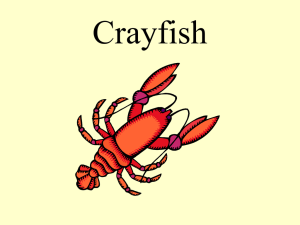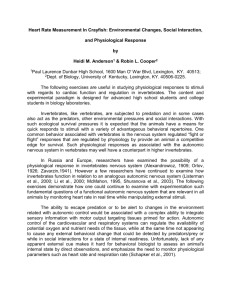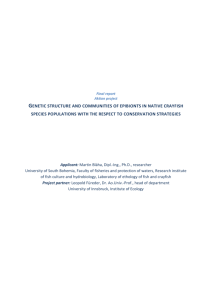Lesson PowerPoint - Lewiston School District
advertisement
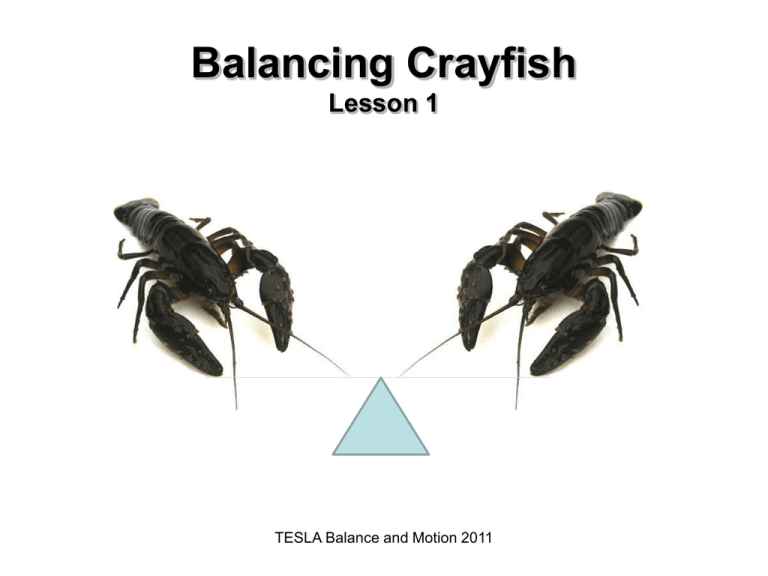
Balancing Crayfish Lesson 1 TESLA Balance and Motion 2011 The Big Idea of this Investigation Our physical world is governed by the properties and interaction of objects and how force affects motion. ENGAGING SCENARIO The Lewiston Toy Company is thinking about making some toys that balance. They would like for you to test some models that they think will help make good balancing toys. One of the models is a crayfish. The Lewiston Toy Company needs your help in testing these models to see if they will work. They have sent us some materials and printed information that may help us. They also need us to keep accurate records and labeled drawings in our science notebooks so we can report what we found out in a couple of weeks. • What is the problem we need to solve? • What do we need to investigate? Kit Inventory These are the objects that have been sent to us by the Lewiston Toy Company. I have put them in this large bag. Let’s see if we can identify them. • What color/shape is the object? • Where have you seen this object before? • What do you think we will use this for in the unit? New Vocabulary Here is one of the models the Lewiston Toy Company sent us to test. It looks like a paper cut out of a crayfish. A crayfish is a macroinvertebrate, or freshwater insect, that can be found in our local rivers and streams. The Lewiston Toy Company is hoping that you can find multiple ways to balance the crayfish on your fingertips. When you try to balance an object it can only rest on your finger. You can’t pinch the object or attach it with something like tape. Lets demonstrate this idea using a ruler or yardstick. Now lets see if you can find a way to balance the crayfish on your finger. Many of you have found one way to balance the crayfish, but the Lewiston Toy Company is hoping that we can find multiple ways to balance this object. For example; On its side, tail, or head. They have sent along some clothespins that may help us solve our problem, but remember… Is an object balanced if we just pinch it to our finger with a clothespin? Focus Question (What is the problem?) How can we use the clothespins to make the crayfish balance in more than one way? NOTEBOOK ENTRY Prediction (related to the focus question) I think that if we ___________________________________ you will be able to balance the crayfish in more than one way. I think that there are __________different ways we can balance the crayfish. Sometimes a scientist needs to explain their thinking with models and drawings because their thoughts are difficult to put in words. Record examples of the different ways you think you can balance the crayfish in your science notebook. Scientists use labels and pay attention to detail so other people can understand their drawings. NOTEBOOK ENTRY Solving our Problem Scientists always try to make careful observations. Test your ideas to see if you can solve the problem. If you think you found a new way to make the crayfish balance, make a drawing of your design in your science notebook. Be sure to label all of your drawings. Sometimes scientist like to record the ideas that don’t work because these ideas can help us understand the problem. NOTEBOOK ENTRY Making Meaning Conference What are some new ways you were able to balance your crayfish? What did you do to get the crayfish to balance on its nose? When you use clothespins to balance an object, does it matter where you put the clothespins? New Vocabulary Counterweight: When you put a weight, like a clothespin, on an object to make it balance, it is called a counterweight. You can use counterweights to make objects balance in new ways. Where should you put clothespins to balance the crayfish on its side? How could you make the crayfish balance straight up and down on its tail? The Lewiston Toy Company will be very pleased with what we have learned so far about balancing objects. When we used the counterweights to balance the crayfish on its nose, this is called a stable position. The crayfish was steady and it did not fall over. When I give it a little push, it wobbles back and forth but does not fall over. The crayfish always comes back to a stable, balanced position on its balance point. Now the Lewiston Toy Company would like us to test some new shapes to see if we can make them balance in multiple ways. This time instead of using our finger as the balance point, they would like us to use a craft stick taped to our desk. Solving our Problem Scientists always try to make careful observations. Test your ideas to see if you can solve the problem. If you think you found a new way to make one of the objects balance, make a drawing of your design in your science notebook. Be sure to label all of your drawings. Sometimes scientist like to record the ideas that don’t work because these ideas can also help us understand the problem. NOTEBOOK ENTRY Making Meaning Conference What are some of the ways you were able to balance the arch? What are some of the ways you were able to balance the triangle? How can you tell if an object is stable? Does the location of your clothespins make a difference? Where is the best place to put counterweights on a crayfish? arch? or triangle? Claims and Evidence Use your own words, or words from the word wall, to help you complete the following sentences in your science notebook. I claim that we can balance different objects in many ways. I know this because… I claim that adding ______________ can help us balance an object. I know this because… I claim that an object is stable when it _________________ I know this because… NOTEBOOK ENTRY Reflection/Conclusion Revisit your original prediction and respond to one of the following stems: My prediction was accurate or was not accurate because….. I wish to revise my prediction because… My original thinking has changed because… What did you learn…? What really surprised you…? What new questions do you have…? What would you like to know more about…? NOTEBOOK ENTRY

